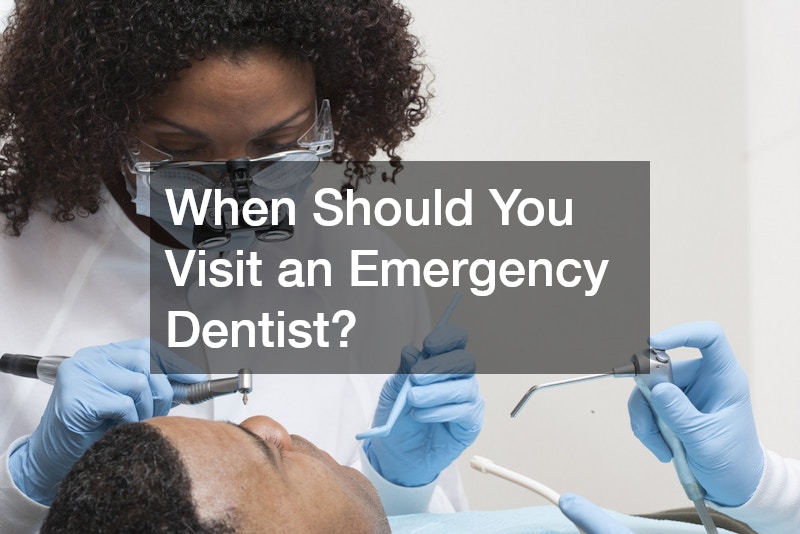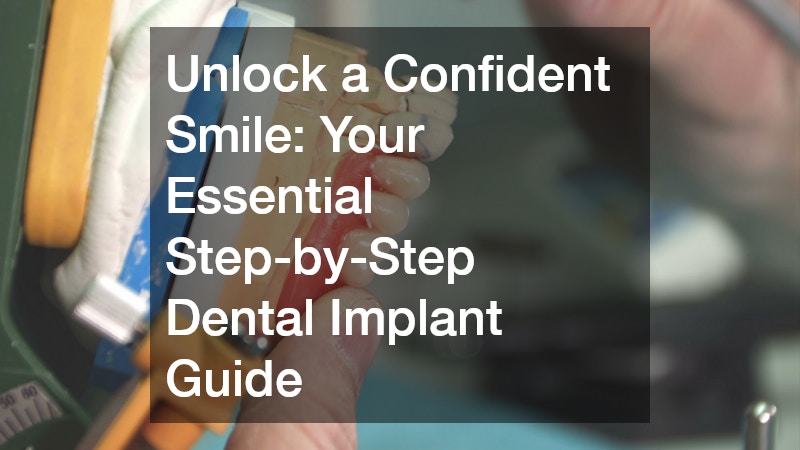Oral health issues can range from minor discomforts to severe, urgent problems that require immediate care. While regular dental visits are vital for maintaining a healthy mouth, there are certain situations where waiting for a standard appointment isn’t an option. That’s where an emergency dentist becomes crucial. Understanding when to seek emergency dental care can help prevent complications, alleviate pain and preserve your teeth.
Recognising Dental Emergencies
The line between a routine dental issue and a dental emergency can sometimes be unclear. However, any oral health concern that involves severe pain, excessive bleeding, swelling or damage to the teeth and gums may indicate a need for immediate care. If you’ve sustained trauma to the mouth, such as a knocked-out or fractured tooth or are experiencing signs of infection like fever, pus or a foul taste, it’s best to consult an emergency dentist as soon as possible. Delaying care in such cases may result in permanent damage or more invasive treatment down the line.
Pain that prevents you from eating, sleeping or concentrating is often a red flag. This level of discomfort is not something to tolerate or mask with over-the-counter medication for long. An emergency dentist can diagnose the root of the pain and deliver relief, whether it’s due to decay, abscess or injury. In many cases, prompt treatment is the key to saving a tooth and preventing the spread of infection.
Knocked-Out & Broken Teeth
Physical accidents during sports, falls or even biting into hard foods can lead to a knocked-out or fractured tooth. When this occurs, time is of the essence. A knocked-out tooth has the highest chance of being saved if treated within 30 minutes to an hour. It’s essential to handle the tooth carefully, avoiding the root and to keep it moist—either in milk or inside your cheek—while on the way to the emergency dentist.
A broken or chipped tooth may not seem as urgent, especially if there’s no immediate pain. However, sharp edges can cut the tongue or cheeks and the inner pulp of the tooth might be exposed, risking infection. Even minor cracks should be assessed quickly to determine the best treatment and prevent further damage.
Uncontrollable Bleeding or Swelling
Significant oral bleeding after an injury or dental procedure that doesn’t stop after 10 minutes of applied pressure is another clear indicator of a dental emergency. This kind of bleeding may stem from deep cuts in the soft tissues of the mouth or a dislodged tooth. Swelling in the jaw or face, particularly if it’s accompanied by pain or difficulty breathing, could signal a serious infection such as a dental abscess.
An abscess is a pocket of pus caused by bacterial infection. It can be extremely painful and often presents with swelling, fever and a persistent bad taste or smell in the mouth. Left untreated, the infection can spread to other parts of the body, making immediate intervention by an emergency dentist vital.
Lost Fillings, Crowns & Other Dental Work
While losing a filling or crown might not seem like an urgent issue, it can leave the affected tooth vulnerable to damage or decay. In some cases, the exposed tooth structure can become sensitive or painful, particularly when eating or drinking. Seeking help from an emergency dentist ensures the area is protected and stabilised until a permanent solution can be arranged.
In the case of broken braces, wires or other orthodontic appliances, discomfort and risk of injury to the soft tissues in the mouth may prompt an emergency visit. An emergency dentist can adjust or temporarily fix the appliance until a follow-up with your orthodontist is possible.
Severe Toothaches & Infections
Toothaches are among the most common reasons people seek emergency dental care. A toothache that comes on suddenly, worsens rapidly or is accompanied by swelling, heat or a bad taste may be the sign of a serious issue such as an abscess, infection or advanced decay. These conditions rarely resolve on their own and often become more painful over time.
An emergency dentist can identify the source of the problem using diagnostic tools and provide relief through treatments such as root canal therapy, drainage or antibiotics. In some cases, tooth extraction may be required to stop the spread of infection and reduce pain. Early intervention reduces the likelihood of more complex procedures later on.
When Delaying Care Isn’t an Option
Some individuals may be tempted to put off emergency dental visits due to time constraints, anxiety or uncertainty about the severity of the issue. However oral health problems rarely improve without treatment. Delays can result in complications that are more difficult and expensive to treat. More importantly, some infections have the potential to affect overall health, spreading to the bloodstream and posing a threat to vital organs.
The Importance of Acting Quickly
Dental emergencies are often unpredictable, but knowing when to act makes a critical difference. Whether you’re dealing with intense pain, injury, infection or lost dental work, visiting an emergency dentist without delay ensures that problems are addressed before they escalate. Immediate treatment not only brings relief but also protects your teeth, gums and overall health. Don’t hesitate to seek help—your future smile depends on it.
.




